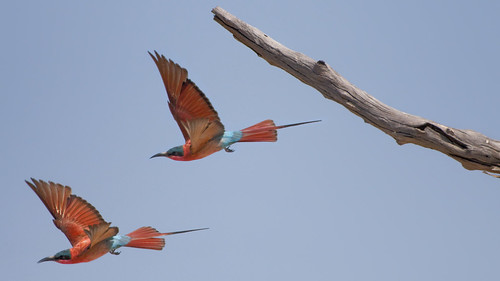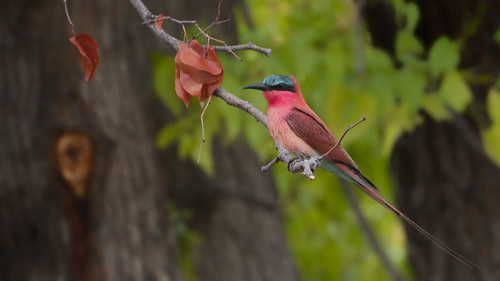
Show me a bird photographer who has not been fascinated by Bee-eaters and I will point out a liar 🙂
The sheer grace in flight and resplendent colors coupled with their boldness and tolerance to camera makes them a photographers delight.
Photographing Southern Carmine Bee-eater (Merops nubicoides) was an item on my Bucket list and I got was lucky enough to tick it off fairly easily on my trip to Botswana. Why this particular species? The main reason for my fascination is the strikingly different color as compared to other bee-eaters which are mostly blue green.
The Southern Carmine Bee-eater (formerly Carmine Bee-eater) occurs across sub-equatorial Africa, ranging from KwaZulu-Natal and Namibia to Gabon, eastern Democratic Republic of the Congo and Kenya.
Its usual habitat included low-altitude river valleys and floodplains, preferring vertical banks suitable for tunneling when breeding, but readily digging vertical burrows in the level surface of small salt islands. This is a highly sociable species, gathering in large flocks, in or out of breeding season. They roost communally in trees or reedbeds, and disperse widely during the day. Nesting is at the end of a 1-2m long burrow in an earthen bank, where the lay from 2-5 eggs.
This is migratory species, spending the breeding season, between August and November, in Zimbabwe, before moving south to South Africa for the summer months, and the migrating to equatorial Africa from March to August.[1]


[1] https://en.wikipedia.org/wiki/Southern_Carmine_Bee-eater